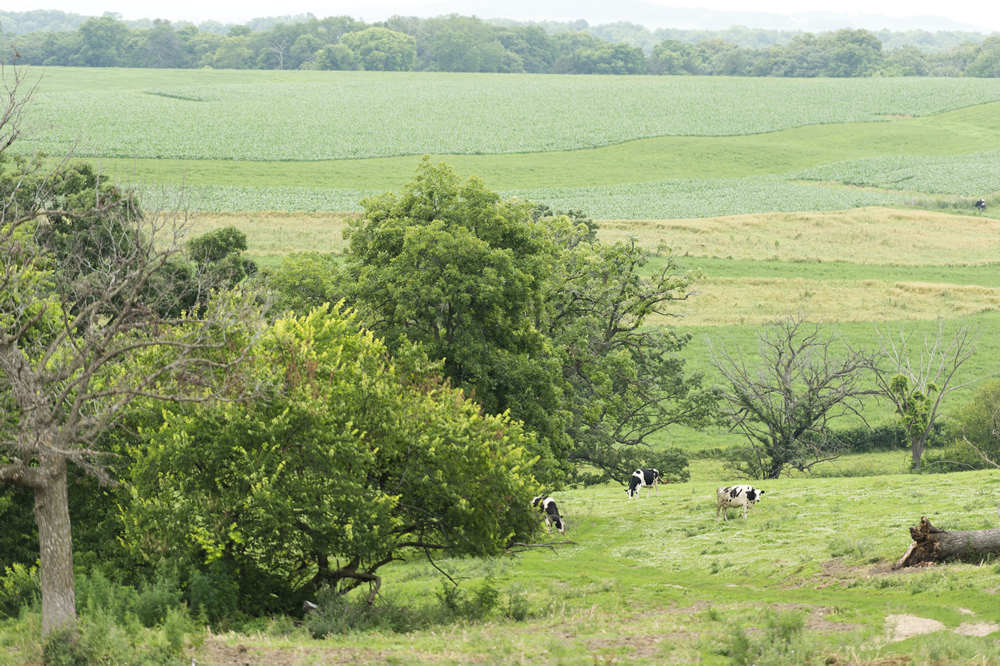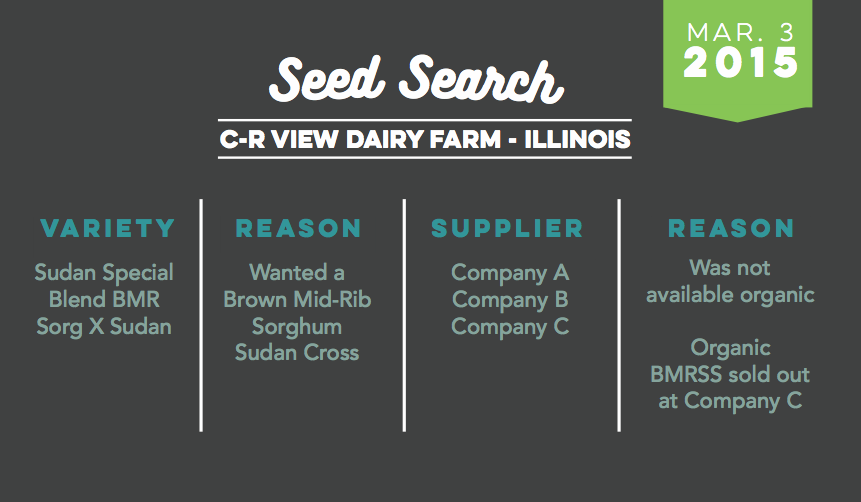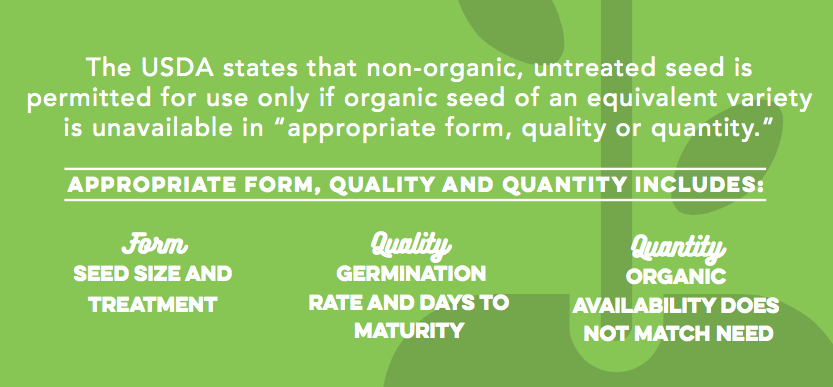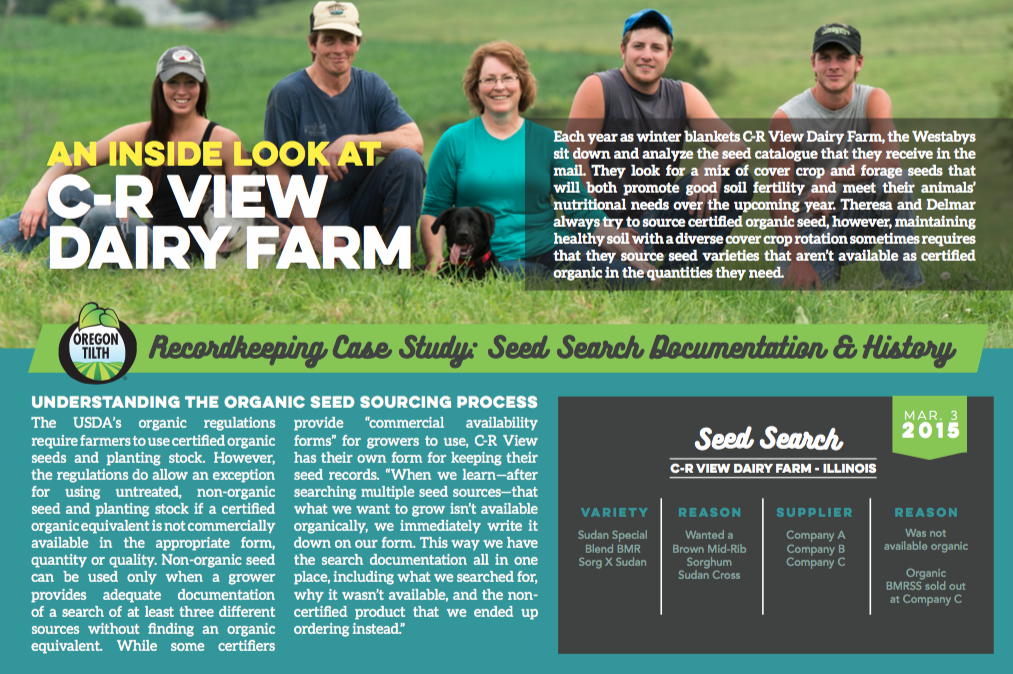Lessons Learned Series: Organic Recordkeeping for Seed Sources
The records of a certified organic farm’s operations and activities demonstrate where promise and practice meet for an inspector and certifier. An annual mandatory inspection examines the integrity and accountability an organic operation, from pest management to soil conditions to contamination prevention and more. The ability to openly audit and trace any certified organic product or crop from beginning to end is critical to maintaining consumer confidence and creates a strong foundation to address any issue with quick action.
With support from the U.S. Department of Agriculture’s Agricultural Marketing Service, National Organic Program, Oregon Tilth developed a series of farmer-to-farmer case studies on best practices in recordkeeping. We sincerely appreciate the four farms that shared their practices with us in order to “help guide other organic farmers, even if just a little bit” as they build a strong culture of recordkeeping on their farms.
Recordkeeping case study: Seed search documentation and history
An inside look at C-R View Dairy Farm

Each year as winter blankets C-R View Dairy Farm, the Westabys sit down and analyze the seed catalog that they receive in the mail. They look for a mix of cover crop and forage seeds that will both promote good soil fertility and meet their animals’ nutritional needs over the upcoming year. Theresa and Delmar always try to source certified organic seed, however, maintaining healthy soil with a diverse cover crop rotation sometimes requires that they source seed varieties that aren’t available as certified organic in the quantities they need.
Understanding the organic seed sourcing process
The USDA’s organic regulations require farmers to use certified organic seeds and planting stock. However, the regulations do allow an exception for using untreated, non-organic seed and planting stock if a certified organic equivalent is not commercially available in the appropriate form, quantity or quality. Non-organic seed can be used only when a grower provides adequate documentation of a search of at least three different sources without finding an organic equivalent.
While some certifiers provide “commercial availability forms” for growers to use, C-R View has their own form for keeping their seed records. “When we learn—after searching multiple seed sources—that what we want to grow isn’t available organically, we immediately write it down on our form. This way we have the search documentation all in one place, including what we searched for, why it wasn’t available, and the non- certified product that we ended up ordering instead.”

C-R View Farm’s best practices for seed sourcing documentation
1. Document the search
Documenting the date of your seed availability search, suppliers contacted and communication history (emails, phone call logs, etc.) is vital information for your inspection. It must be presented for any non-organic seed planted, even if you are using seed previously documented as commercially unavailable from the previous year.
2. Organize your records
Save and organize all of your receipts, labels and packets of both certified and non-certified seeds for the past five years. Purchase records should be easily accessible during your inspection. In addition, have your commercial availability search documentation available for all non-organic seed used.
3. Request a statement
Request a supplier statement for all non-certified organic seeds, affirming the seeds are non-GMO (if a GMO version is commercially available), and are not treated with prohibited substances.
4. Create your system
C-R View Dairy Farm uses a record keeping system that prints seed receipts and writes the quantity of seed purchased directly on the receipts. They also request supplier statements before making purchases and store the statements and receipts separately from organic seed receipts so they are quickly accessible.

Additional resources
Finding organic seeds can be challenging, but luckily there are several good resources out there to help track down specific crops, varieties and more:

